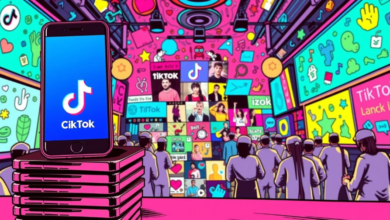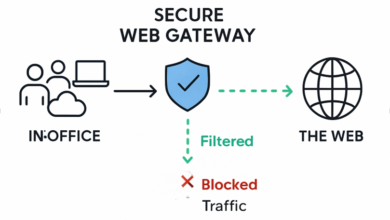Why Counter-Strike 1.6 Remains the Gold Standard of Classic Shooters

Ask any seasoned gamer to list the most influential multiplayer games of all time, and Counter-Strike 1.6 is guaranteed to make the cut. More than just a nostalgic relic, this legendary title is still alive and well, embraced by purists and newcomers alike. If you’ve never experienced the fast-paced action, sharp gunplay, and tactical brilliance that define this classic, now’s the perfect time to jump in and play CS 1.6. It’s available for download on a dedicated platform that also offers access to related titles and editions, helping preserve the original essence of this global phenomenon.
Originally launched as a mod for Half-Life in 1999, Counter-Strike evolved quickly and was officially released in its 1.0 form in 2000. However, it was version 1.6—released in 2003—that became the definitive build. It refined the weapon mechanics, introduced Steam integration, and became a universal standard for competitive play. While newer iterations of the series like CS: Source and CS:GO brought graphical improvements, CS 1.6 remained unmatched in terms of its balance, simplicity, and community-driven content.
Interestingly, the Half-Life universe itself continued to thrive alongside Counter-Strike, with titles like Half-Life 2 capturing the imagination of single-player fans. Many players who got into CS 1.6 found themselves later diving into the world of City 17, the Combine, and Gordon Freeman. If you’ve never tried it, you can download Half Life 2 and explore the narrative side of the universe that birthed Counter-Strike. This interconnection between story-driven gaming and competitive multiplayer laid the foundation for many future franchises.
See also: Huawei Watch Fit 4: A Leap Forward in Wearable Tech
One of the most enduring aspects of CS 1.6 is its minimalist nature. There are no killstreak rewards, no over-the-top graphics, and certainly no handholding. You learn the game by playing, dying, watching others, and getting better. It rewards situational awareness, reflexes, and teamwork in ways that many modern shooters can’t replicate. Each round is a fresh opportunity—lose your life, and you’re spectating until the next. This high-stakes pacing is what makes the game so addictive.
The game’s economy system is another masterpiece in design. At the start of each round, you earn money based on your performance, which you then use to buy weapons, armor, and gear. Spend wisely, and you might turn the tide of the match. Blow your budget recklessly, and your team could be facing multiple rounds with pistols while the enemy holds rifles and AWPs. It’s a system that introduced strategic depth and planning to a genre often dominated by raw action.
Maps like de_dust2, de_inferno, and cs_assault are burned into the minds of long-time players. Their layouts are perfect for fast decision-making, ambushes, and coordinated attacks. It’s no surprise that Dust2, in particular, has been recreated in almost every version of Counter-Strike and remains a favorite even in current competitive circuits. These maps were community-tested and balanced over years, becoming benchmarks in level design that future shooters still study.
On the social side, CS 1.6 helped establish the concept of online communities before gaming forums and Discord servers were common. Every server had its own set of players, rules, and mini-cultures. You didn’t just log in to play—you logged in to meet familiar usernames, share jokes, compete for the top spot, and sometimes even make lifelong friends. LAN cafes were packed with teams strategizing shoulder-to-shoulder, yelling over headset static, and celebrating every clutch play.
Even as technology has advanced, CS 1.6 remains widely accessible. The game runs smoothly on virtually any computer, meaning there’s no hardware barrier to entry. This has made it a staple in countries where modern gaming rigs are less common, further solidifying its global footprint. It’s not just a Western phenomenon—it’s played in Russia, Brazil, Southeast Asia, the Middle East, and everywhere in between.
There’s also a certain purity in CS 1.6’s skill ceiling. Every shot counts. Spray patterns, recoil control, movement timing—these are all elements that need to be practiced and refined. You can’t buy your way to victory with in-game purchases or rely on fancy abilities. You have to earn every win with actual skill. That’s why so many professional players who dominate in modern shooters often started with CS 1.6—it taught them the core fundamentals of competitive play.
Moreover, the game is still being kept alive by dedicated communities who host servers, create mods, and organize tournaments. Whether you’re interested in classic competitive gameplay or want to explore modded versions like zombie modes or gungame servers, there’s something for everyone. This vibrant ecosystem is a testament to how well-designed and flexible the core game really is.
In conclusion, Counter-Strike 1.6 isn’t just an old game. It’s a landmark title that continues to influence the industry. It laid the foundation for esports, introduced many players to online multiplayer, and demonstrated that great game design doesn’t need photorealistic graphics to thrive. If you’ve never played it, CS 1.6 is still out there, waiting for a new generation of players. And while you’re at it, why not immerse yourself in the story-rich world that started it all—download Half Life 2 and see how Valve revolutionized both single-player and multiplayer gaming in one fell swoop.




